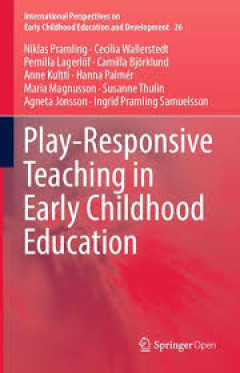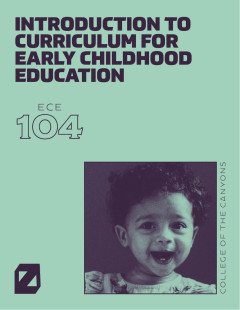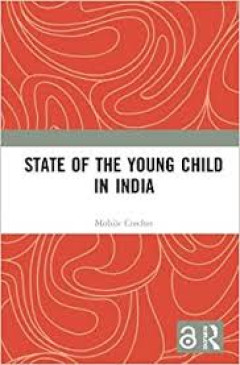Ditapis dengan

Play-Responsive teaching in early childhood education
One of the central problems facing early childhood education is the push down of an academic curriculum. The pressure for the schoolification of play-based settings has become increasingly prevalent in many Northern Hemisphere continents. Sweden – where the content of this book has been conceptualised and studied – is no exception. Despite the Swedish early childhood education syst…
- Edisi
- -
- ISBN/ISSN
- 9783030159580
- Deskripsi Fisik
- -
- Judul Seri
- -
- No. Panggil
- 372.21 FEE p

Leadership in early education in times of change
The collection brings together the latest work of researchers from Australia, Africa, Asia, and Europe focusing on early childhood leadership matters. It covers different aspects of leadership in early education: professional education and development, identity and leadership strategies as well as governance and leadership under different frame conditions.
- Edisi
- -
- ISBN/ISSN
- 9783847412243
- Deskripsi Fisik
- 310 p.
- Judul Seri
- -
- No. Panggil
- 372.21 LEA l

Chapter 4 preschool education
"The Routledge Handbook of Translation and Education will present the state of the art of the place and role of translation in educational contexts worldwide. It lays a sound foundation for the future interdisciplinary cooperation between Translation Studies and Educational Linguistics. By adopting a transdisciplinary perspective, the handbook will bring together the various fields of schol…
- Edisi
- -
- ISBN/ISSN
- 9780367854850
- Deskripsi Fisik
- 64-80p.: ill.
- Judul Seri
- -
- No. Panggil
- 418.02 COR c

Introduction to curriculum for early childhood education
Welcome to learning about how to effectively plan curriculum for young children. This textbook will address: - Developing curriculum through the planning cycle - Theories that inform what we know about how children learn and the best ways for teachers to support learning - The three components of developmentally appropriate practice - Importance and value of play and intentional teaching …
- Edisi
- -
- ISBN/ISSN
- -
- Deskripsi Fisik
- 514p. : ill.
- Judul Seri
- -
- No. Panggil
- 372.19 PAR i

Young children's play and environmental education in early childhood education
In an era in which environmental education has been described as one of the most pressing educational concerns of our time, further insights are needed to understand how best to approach the learning and teaching of environmental education in early childhood education. In this book we address this concern by identifying two principles for using play-based learning early childhood environmental …
- Edisi
- -
- ISBN/ISSN
- 9783319037400
- Deskripsi Fisik
- 88 p.; 22 cm
- Judul Seri
- -
- No. Panggil
- 372.21 YOU y

State of the young child in India
This Report is one of the first comprehensive studies on young children in India. It focuses on children under 6 years of age and presents key aspects of their well-being and development. It introduces two young child indices aggregating selected indicators to separately track child outcomes and child circumstances and provides an account of the current situation of the young child in terms of …
- Edisi
- -
- ISBN/ISSN
- 9781003026488
- Deskripsi Fisik
- 332 p.; 22 cm.
- Judul Seri
- -
- No. Panggil
- 305.230954 STA s

Breastfeeding:short and long-term benefits to baby and mother
Breastfeeding is the preferred method of feeding in early life. It is also one of the most cost-effective childhood survival interventions. Breastfeeding practices are important for preventing child mortality and morbidity, as well as ensuring the optimal growth, health, and development of infants. The public health benefits of breastfeeding have been well documented in the medical literature, …
- Edisi
- -
- ISBN/ISSN
- 978303928226
- Deskripsi Fisik
- xii, 298p.: ill.
- Judul Seri
- -
- No. Panggil
- 649.33 BRE b
 Karya Umum
Karya Umum  Filsafat
Filsafat  Agama
Agama  Ilmu-ilmu Sosial
Ilmu-ilmu Sosial  Bahasa
Bahasa  Ilmu-ilmu Murni
Ilmu-ilmu Murni  Ilmu-ilmu Terapan
Ilmu-ilmu Terapan  Kesenian, Hiburan, dan Olahraga
Kesenian, Hiburan, dan Olahraga  Kesusastraan
Kesusastraan  Geografi dan Sejarah
Geografi dan Sejarah